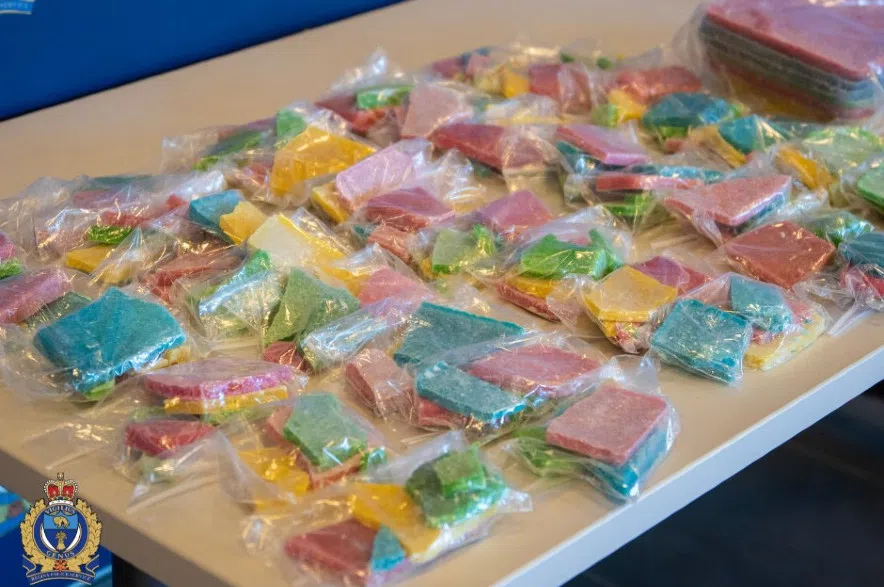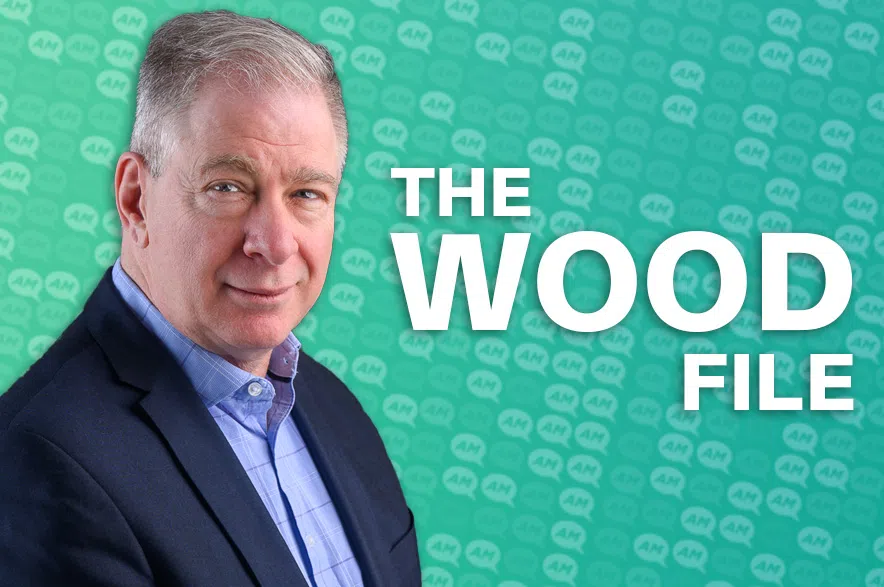The provincial government announced a suite of new measures on Tuesday aiming to curb the production, transportation, sale and use of methamphetamine and fentanyl in Saskatchewan.
According to the Government of Saskatchewan, fentanyl and methamphetamine “are increasingly the cause of overdose deaths, violent crime and community instability.” By addressing the drug issue on both the supply and demand sides, the government said it aims to reduce drug-related harm, improve public safety and foster stability in communities around the province.
Read More:
- Fentanyl has killed thousands. Here are some facts about the powerful opioid
- UPDATE: Two U of R Rams among five arrested in $1.5M drug bust
- Former Mountie Kevin Brosseau named fentanyl czar
The changes include the creation of provincial penalties, “including fines up to $1 million in some cases” for unauthorized production, transportation and distribution of the two drugs.
The new measures also include policies that would cancel provincial licences for those convicted of drug-related crimes, including driver’s licences, firearms licences, hunting and fishing licences and potentially business and municipal licences as well, along with provincial benefits.
“These drugs have caused immense harm in our communities, leading to addiction, crime and loss of life,” Tim McLeod, Saskatchewan’s justice minister, said in a statement.
“We are taking a firm stance to disrupt the flow of fentanyl and methamphetamine while also providing options for offenders to access the resources necessary for recovery.”
Other measures announced on Tuesday include focusing efforts under 2009 legislation that allows the government to seize property that was gained through illegal activity or was used during a crime, prioritizing drug-related offenders to ensure they are arrested and held accountable for their actions, and updating the Trespass to Property Regulations “to classify drug use and other disruptive activities as trespassing, to defend against these activities in semi-public spaces.”
The provincial government said it will also look at updating the fine option program, to allow convicted criminals to receive credit against court-imposed fines if they complete addictions programming.
Finally, the province said it will classify “dangerous, drug-related items” as street weapons, which will allow police to seize them and – in some cases – lay charges.
For some, the new $1 million fine that could be handed down to those trafficking and transporting drugs into Saskatchewan might appear similar to that of the recent increase in fines for possessing and using bear spray in public spaces.
Last March, the government made it illegal to deface or alter bear spray cans or carry it in urban public spaces like shopping malls, movie theatres and city parks.
The new rules also made it so that those who are charged with a bear spray offence could face fines up to $100,000. The hope of that law was to deter people from using it and bring down the crime rates associated with it.
Minister McLeod said the implementation of the new penalties is different from each other.
“Originally, the legislation for bear spray was under the wildlife legislation and it was more intended for that world. What we’ve done is added bear spray under the safe public spaces legislation,” McLeod explained. “This is something that the police can now seize before it’s used in the commission of any offence. The whole idea is giving police the tools they can use that are unsafe for the community before there’s a victim.”
“The up to $1 million fine for fentanyl would be under the public health legislation and regulations. It’s more targeted to those who produce, traffic and transport fentanyl, making it an unsafe situation for the public,” McLeod added. “It’s significantly different from what we’re talking about where we’re talking about simply apprehending something from a person who is holding it, compared to punishing somebody very significantly for trafficking.”
He thinks the up to $1 million fine will be useful.
“I would say that fines are quite a common penalty under the criminal law — we use them in a variety of circumstances, I would say that yes, fines are typically very broadly an effective measure,” McLeod added.
Saskatoon Police Chief Cam McBride said it will take time to see if these new measures announced by the government will work.
“I can say it’s yet to be proven, but I can say the provincial government is obviously engaged in community safety,” McBride said. “Through consultation, have come up with some really encouraging possibilities that only through their use and the enforcement that it offers us will we be able to see the end result.”
“At the end of the day, some of this I’m very encouraged by. Some of this in my heart of hearts will make a significant difference,” McBride added. “We just anticipate it coming into force and being able to utilize it in our operations.”
The announcements follow several major fentanyl busts in Saskatchewan, including the seizure of eight kilograms of the powerful opioid by RCMP officers during a traffic stop on Highway 1 in the Swift Current area on January 29.
More recently, police in Regina seized 7.5 kilograms of fentanyl, along with cash, weapons and other drugs, following the conclusion of a four-month investigation last week.
At the national level, Canada recently named Kevin Brosseau, a former senior Mountie, to act as the country’s “fentanyl czar,” in a move intended to curb cross-border traffic of the drug following criticism from U.S. President Donald Trump.











